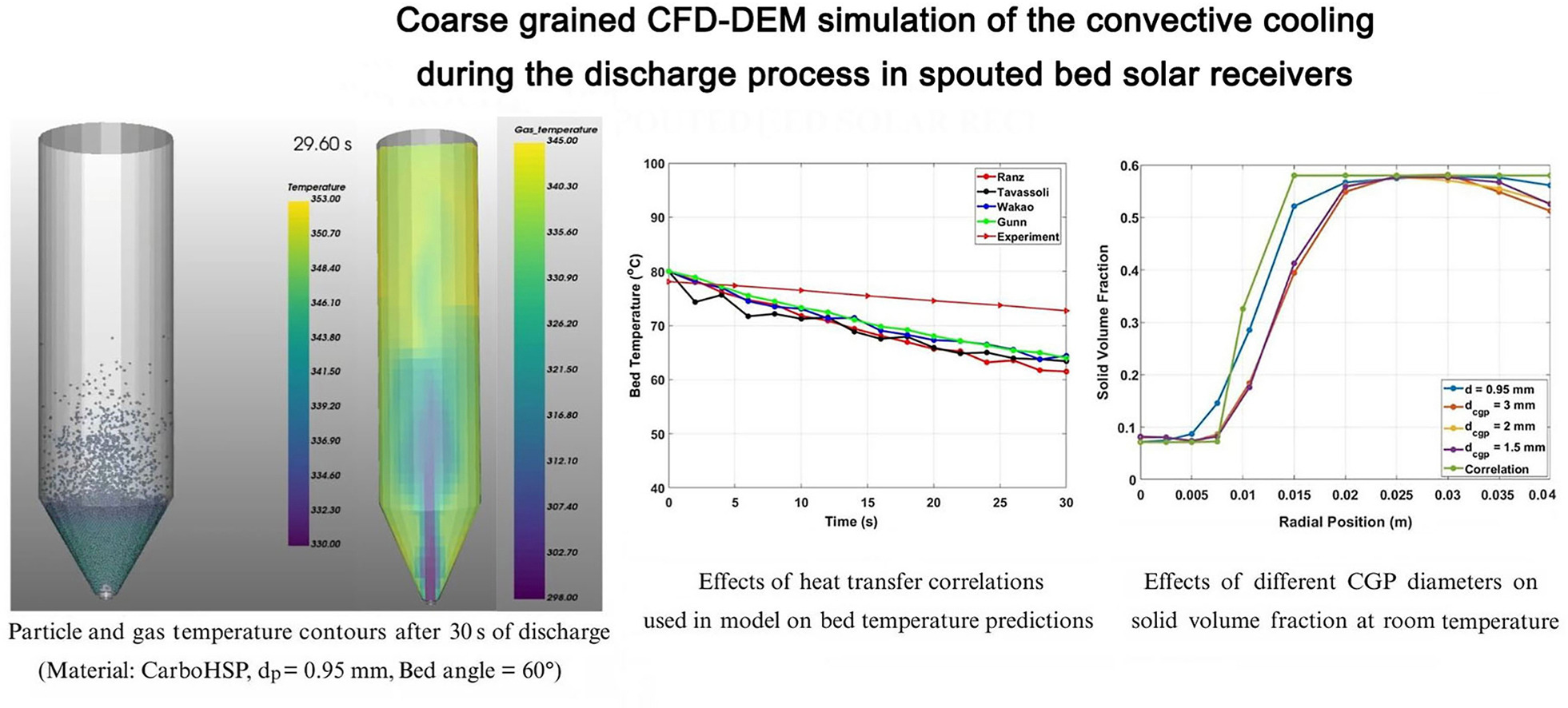• Hydrodynamic simulations show gas-solid flow behavior in spouted bed is well captured by CGP-CFD-DEM and CFD-DEM approach.
• Hydrodynamic results are most sensitive to restitution coefficient.
• Coarse-grained particle diameter does not significantly affect bed temperature.
• Bed temperature during discharge process is not affected by choice of gas-to-particle heat transfer correlation.
One of the emerging applications of spouted beds is their utilization as thermal energy storage units in concentrated solar power systems (CSP). Computational Fluid Dynamics-Discrete Element Method (CFD-DEM) is one of the approaches to model multiphase flow reactors and gain insights into their behavior. Although several studies have used the CFD-DEM approach to investigate heat transfer in fluidized and spouted beds, research on CFD-DEM thermal modeling of spouted beds specifically as solar receivers in CSP systems remains limited. Therefore, the aim of this study is to evaluate the predictive capability of the CFD-DEM approach for modeling spouted bed thermal receivers and to gain insight into the hydrodynamic and thermal parameters that influence simulation results. An open-source program MFIX (Multiphase Flow with Interphase Exchanges) was used for model development. For model validation both cold and hot laboratory scale (15 cm cylindrical diameter, 60° conical angle) conical spouted beds were built and used in experiments. CFD-DEM simulations were carried out for Carbo HSP particles (dp = 0.95 mm, ρp = 3630 kg/m3) at a static bed height of 100 mm. Throughout the study, the coarse-grained particle-DEM (CGP-DEM) method was used to reduce the computational time. The hydrodynamic simulation results indicate that gas-solid flow behavior in the spouted bed is well captured using both CGP-CFD-DEM and CFD-DEM approaches. The coarse-grained simulations of convective cooling during the discharge of a directly irradiated spouted bed with CarboHSP particles slightly underpredict the experimental cooling curve. Since the cooling curve is highly sensitive to wall boundary conditions, accurately determining these conditions is crucial for precise heat loss predictions. Furthermore, the coarse-grained particle diameter was found to have no significant effect on bed temperature.

